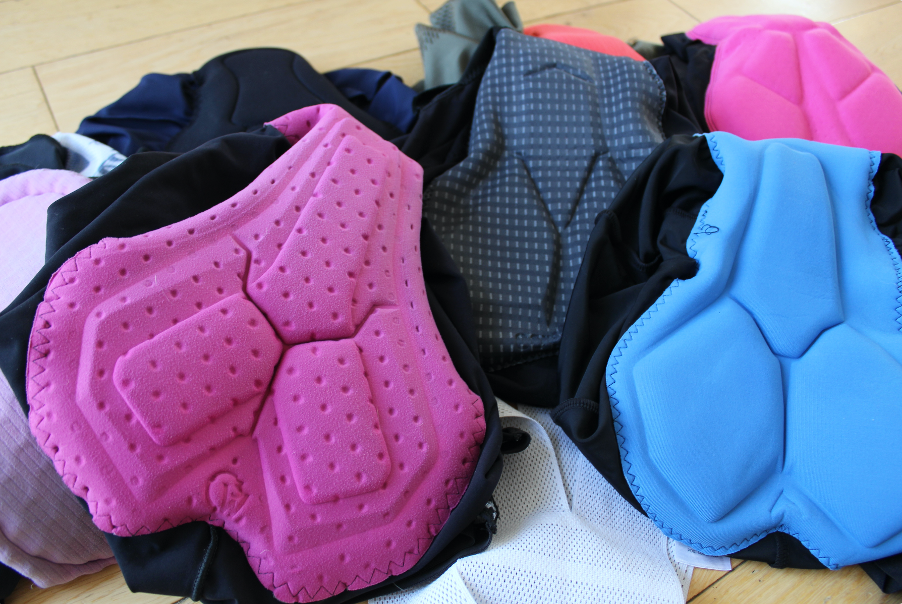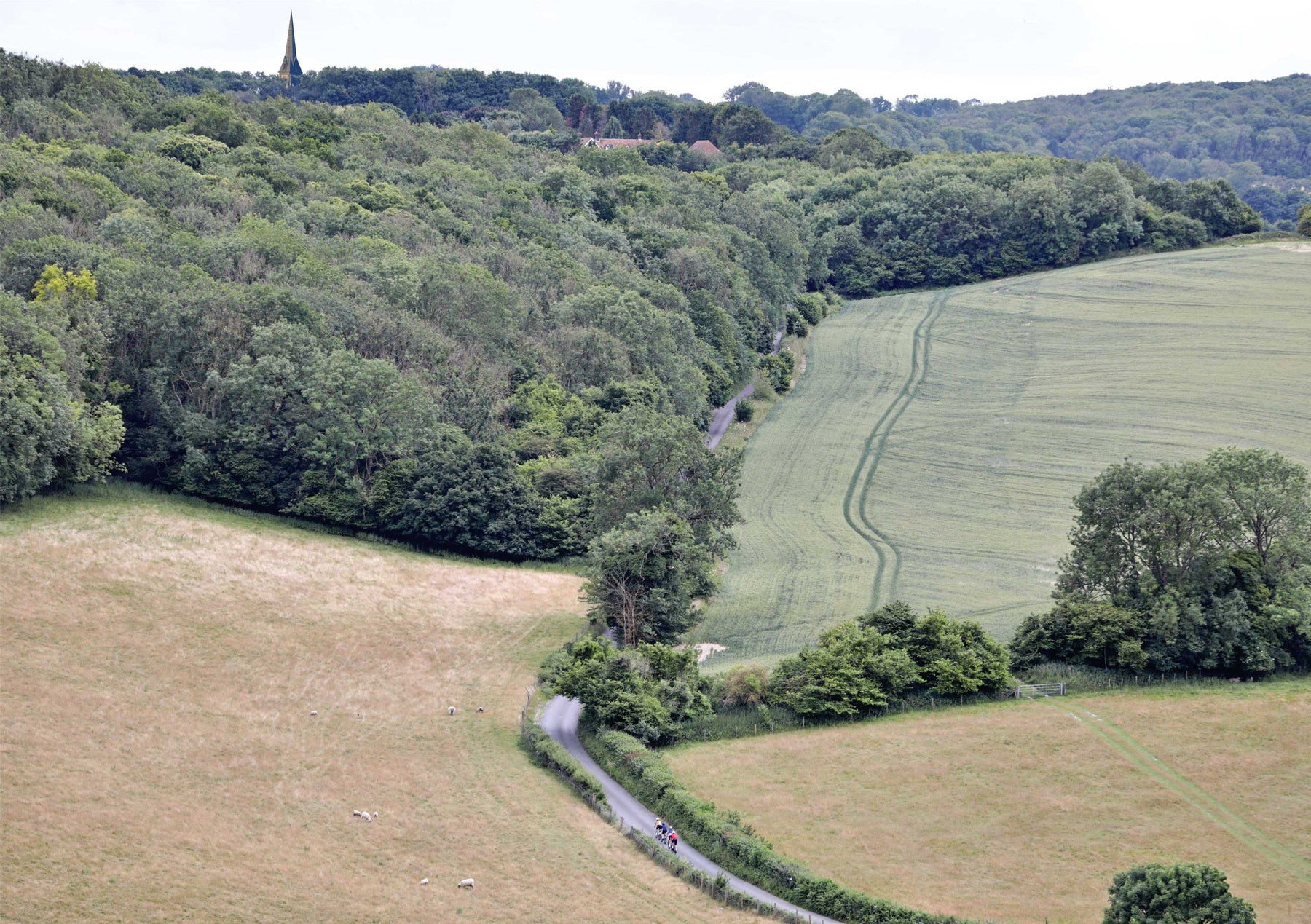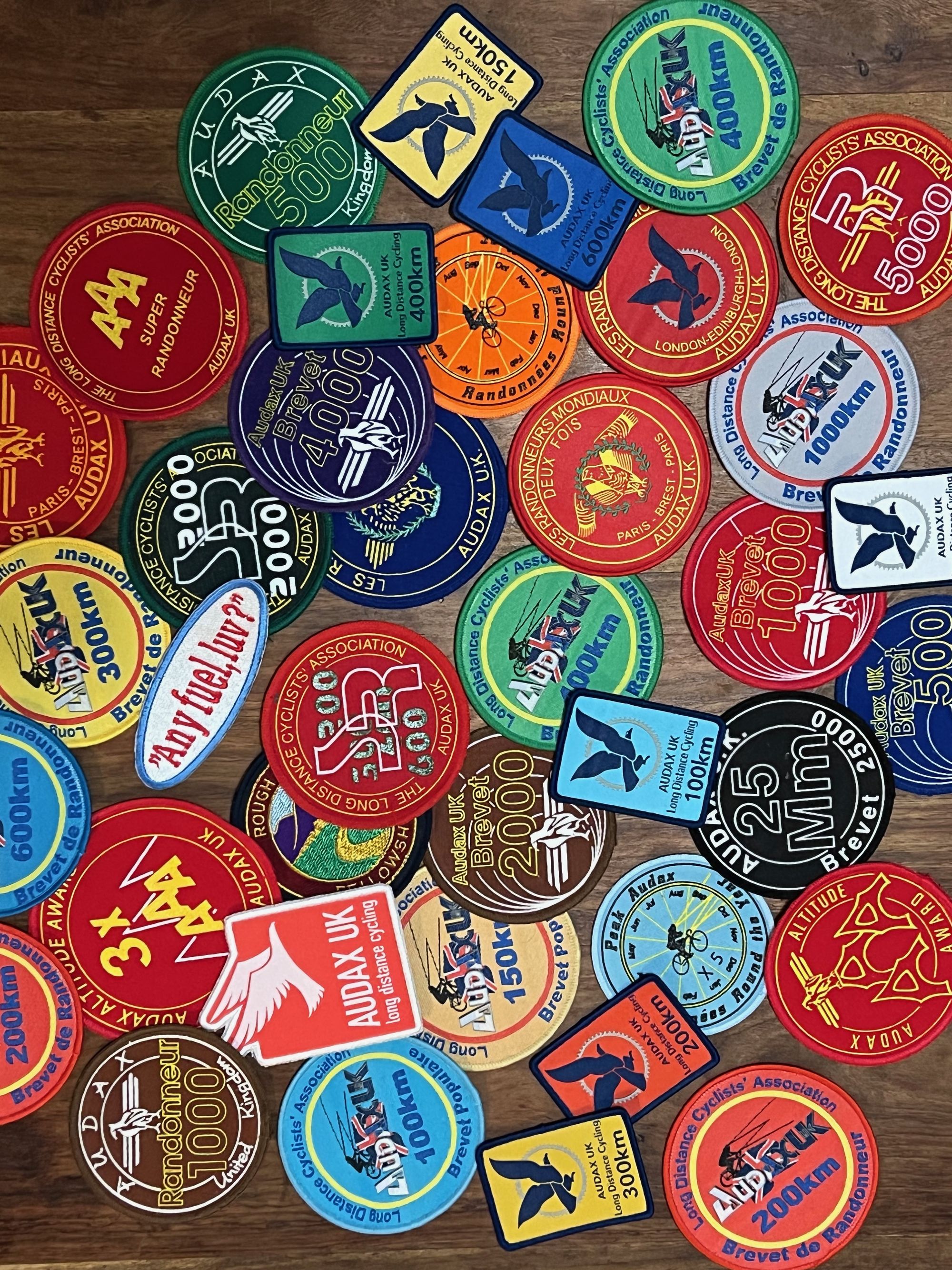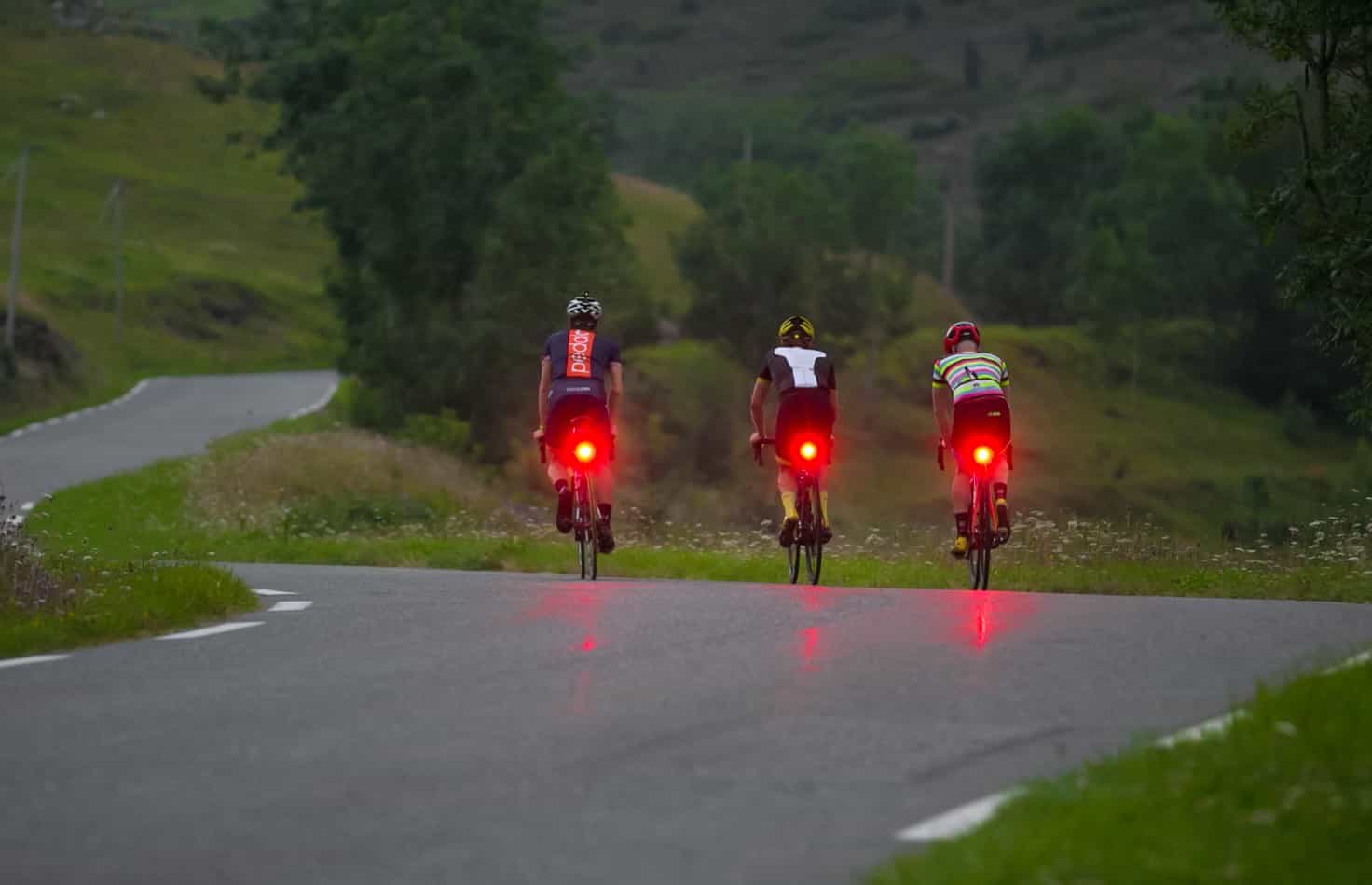Why wear cycling shorts?
Cycling shorts are bike-specific sports shorts and are one of the first bits of kit to invest in when starting cycling. They’re made of synthetic materials for ease of movement, wicking of sweat and durability. Importantly, they feature a padded seat – acting as a shock absorber between your sit bones and the bike to minimise bruising from bumps and vibrations. As a result, they give a huge improvement in on-the-bike comfort and will allow you to tackle longer rides with (relative) ease!
But where do you start? And why does everyone call them “bibs”…
This article aims to provide clarity on all things cycling shorts – explaining the things I wish someone had told me when starting out, and things I’ve found myself explaining to others since.
We’ll begin with a quick explainer of key cycling shorts terminology, then get into the details of how to choose shorts and how to wear them.
Bib shorts and Waist shorts – jargon-busting
Bib shorts: Cycling shorts with any form of strap or upper which keeps them in place while riding.
Waist shorts: Cycling shorts without straps, normally with a thicker or tighter waist or waist section in lieu of straps.
Chamois (“chammy”) pad: A seat-shaped pad which sits in the crotch of cycling shorts, and provides cushioning.
Chamois cream: A friction-reducing cream, applied to your undercarriage or the chamois pad, aiming to delay or prevent the development of saddle sores.
Saddle sore: Friction-related abrasion – with similar aetiology to bed/pressure sores. Highly uncomfortable, and best avoided with a combination of good shorts, saddle, and bike fit. It’s worth noting that some people are much more susceptible than others!
Gripper: The band at the base of the legs, designed to hold the shorts in place and prevent riding up. Commonly featuring a rubberised band, rubber stippling or a tighter section of fabric.
How do you wear cycling shorts?
This might seem like an unnecessary heading, or the start of a boring section but hopefully, it’s neither. There are important, and sometimes counter-intuitive, things to be aware of when wearing cycling shorts!
Padded cycling shorts are worn without underwear – this is essential for minimising chafing, and the pad is designed to be worn directly against your skin. It’s weird at first, but you get used to it. From experience, I can tell you it’s certainly more comfortable.
Combining shorts with chamois cream is a good idea for further minimising friction. Only a small amount is needed and can be applied to your skin, or onto the chamois around pressure points. Reapplying the cream every few hours on longer rides is recommended too.
The only other thing to be aware of is that padded shorts will initially feel a bit alien, and something like how I imagine wearing a nappy or an enormous sanitary pad would feel. Be reassured this feeling is normal, fades quickly, and pads of varying thicknesses are available if you prefer something less bulky!

A comfortable fit
No two bodies are the same, but thankfully there are a wide variety of bib (and non-bib) short designs out there.
The first thing to say is that it is worth opting for sex-specific shorts. These encompass a comfortable fit around the chest for men and straps which fit around breasts for women.
Beyond fit, the chamois pads differ too - focusing padding and reducing bulk to work with different anatomy.
The length of the short legs varies significantly between designs and brands, and choice is largely personal preference. Aero-style bib shorts will often be longer in the leg, while some brands choose a shorter cut or even offer a range of leg-length options.
There are numerous upper designs too. Traditional straps can be convenient and lightweight. An alternative is a full upper body design, like a built-in base layer. I really like these and often find they hold the shorts up well. Other designs make it easier to remove the shorts with halter neck or buckle release straps. Specific easy-wee shorts for women also exist – with zips or specialised straps to prevent you needing to remove your jersey when going to the loo.
Easy removal is also a benefit of waist shorts. These have no straps, but are still padded cycling specific shorts. They often have a tighter waist section which can be less comfortable, and I’ve found they don’t always perform as well at holding the chamois pad firmly in place, but some people swear by them!
Ultimately, trying on is the best way to determine a good fit. Well-fitting bib shorts should be tight with the chamois hugging up against you. Straps should be taught and there should be no bunching or loose material. Grippers should feel secure but not dig into your legs – if it gives your leg a “waist” the fit is too tight!
It's also worth noting that some brands cater much better for riders needing bigger sizes. Endura offer women’s shorts in UK sizes 8-20, US brand Machines for Freedom cater from XS to 3XL, and Pearl Izumi offer XS-3XL in men’s and women’s shorts. Specialist brand Fat Lad at the Back offer plus sized kit in their custom size ranges – running up to the equivalent of a UK size 24/26 for women, and up to 56” waist for men.
How should you clean your shorts?
Bib short hygiene is important: Due to the extra material and thickness of a chamois pad, the shorts can quickly become sweaty and damp on a hotter or harder ride. So, as soon as your ride is over, the shorts come off. It’s important to get your skin out of the damp environment and it contributes to the anti-saddle-sore mission.
Bib shorts should be washed after every wear. The damp pad is a great medium for bacterial growth so even a short ride or spin session should see them promptly in the laundry.
They don’t need to be hand-washed separately, and normal laundry detergent will work fine. Bleach or fabric conditioners should however be avoided.
A final tip is to watch out for invisible cycling shorts – with years of wear and washing the material can thin. Unfortunately, this seems most common on the rear of the shorts where the material is stretched and can become quite see-through!
Do you have bicycle insurance?
For extra peace of mind, when hitting the roads or trails, at home or abroad, check out our specialist bicycle insurance.






